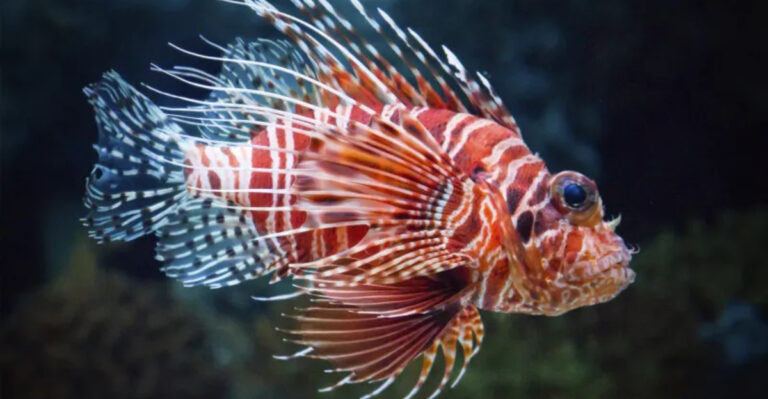16 Venomous Animals Of The Deep South You Need To Avoid
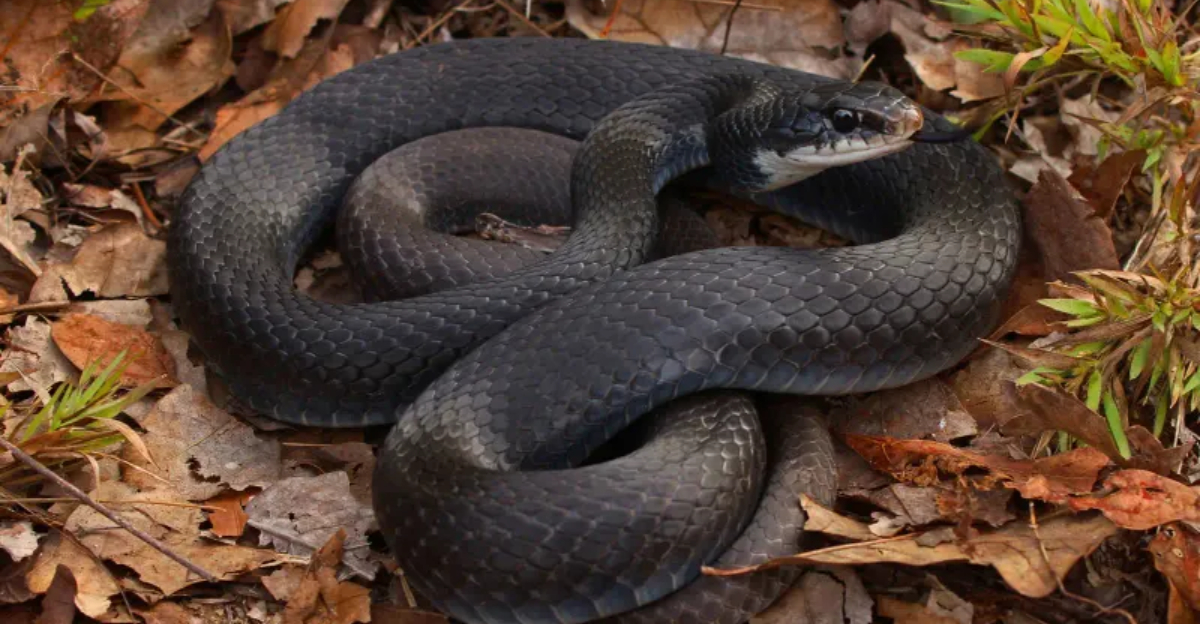
The Deep South is rich in charm, culture and creatures that can pack a painful punch. Beneath the beauty of its swamps, forests, and warm coastlines lurk animals armed with venom potent enough to injure or even be lethal.
Before your next southern adventure, get to know the creatures you definitely don’t want to cross paths with.
1. Red Imported Fire Ant
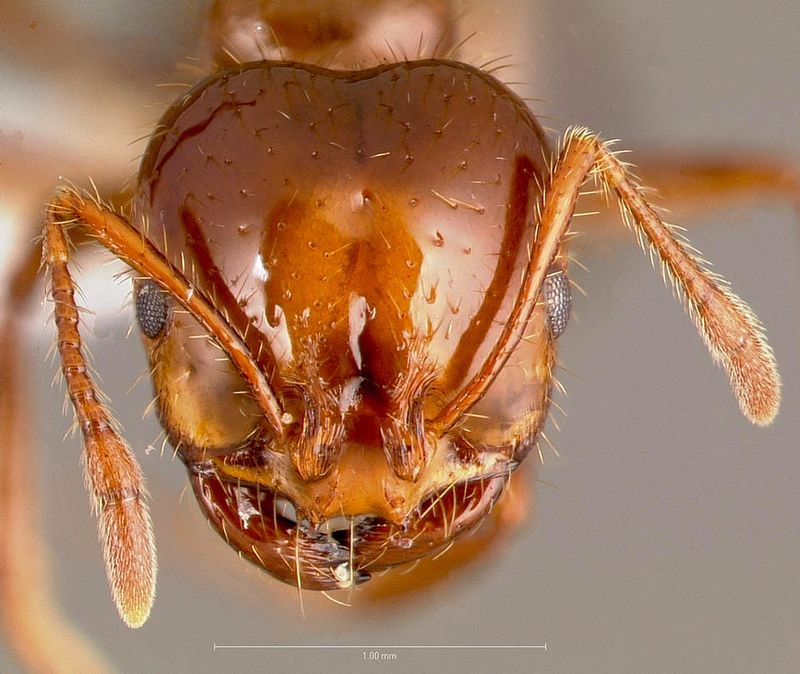
These tiny invaders pack a powerful punch. Red imported fire ants, which originally hail from South America, have made their presence known across the southern United States. These ants are notorious for their aggressive nature and painful stings.
The sting of a red imported fire ant can cause intense pain and itching, often followed by a white pustule. Multiple stings can lead to more severe reactions, particularly for those who are allergic.
Their mounds, often found in yards and fields, can disrupt outdoor activities. Be cautious where you tread, especially in warmer months!
2. Gila Monster
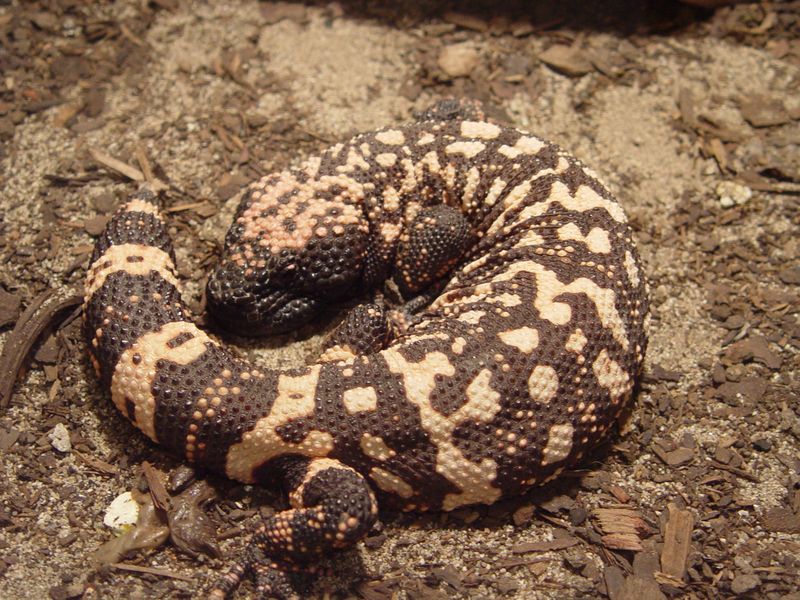
The Gila monster, a creature that seems to have stepped out of a prehistoric era, is one of the few venomous lizards in North America. With its striking black and pink markings, it’s hard to miss this reptile.
Found in the deserts of the Southwest, the Gila monster leads a largely solitary life, emerging mainly at night or during cooler periods to hunt. Its venom, delivered through a chewing action, can cause discomfort, but it is rarely fatal to humans.
Despite their fearsome reputation, Gila monsters are slow-moving and prefer to avoid confrontation. Respect their space for a safe encounter.
3. Eastern Diamondback Rattlesnake

America’s deadliest snake slithers through the pine forests and coastal plains of the southeastern states. Growing up to 8 feet long, these massive pit vipers deliver enough venom in a single bite to kill several adults.
Their distinctive diamond pattern and bone-chilling rattle serve as nature’s warning system. When threatened, they coil tightly, rattle loudly, and can strike with lightning speed at targets up to one-third their body length away.
4. Cottonmouth (Water Moccasin)
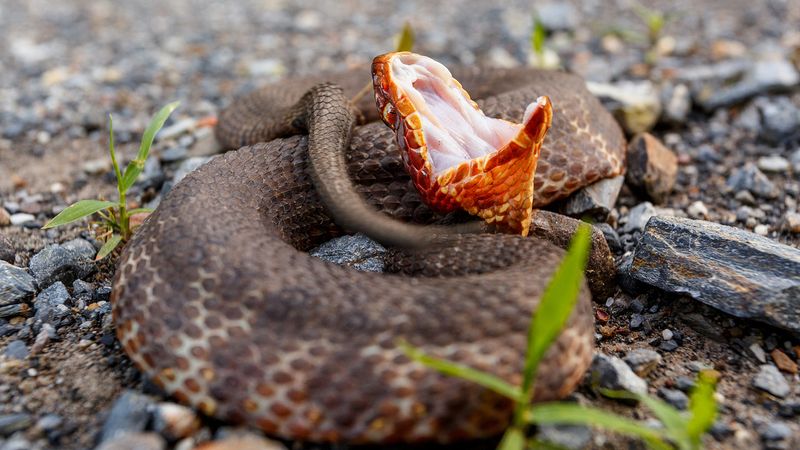
Lurking in swamps, marshes, and slow-moving waterways across the South, these semi-aquatic vipers strike fear into swimmers and fishermen alike. When threatened, they display their signature defensive posture – mouth gaping wide open, exposing the cotton-white lining.
Unlike many water snakes, cottonmouths don’t flee when confronted. They stand their ground aggressively, making them particularly dangerous during accidental encounters. Their venom contains powerful tissue-destroying components that can cause severe pain, swelling, and even limb loss.
5. Copperhead Snake
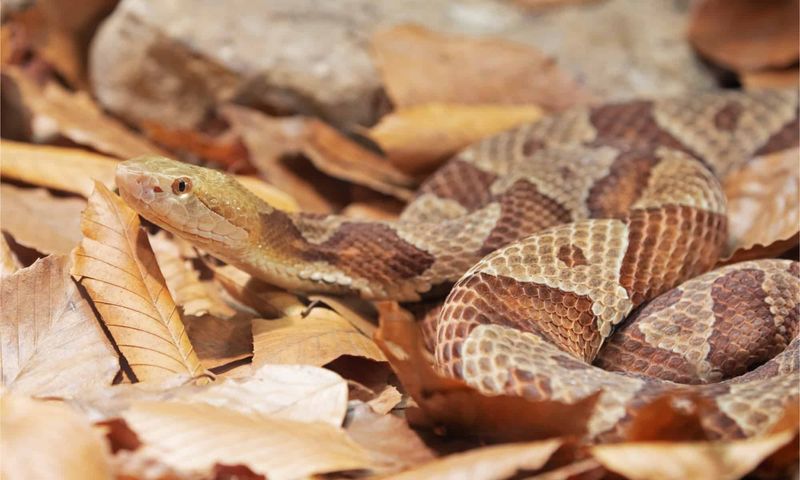
Masters of camouflage, copperheads blend perfectly with fallen leaves on forest floors across the South. Their copper-colored hourglass bands provide exceptional concealment, making them easy to step on accidentally during hikes or yard work.
Though rarely fatal to adults, their bites deliver excruciating pain. What makes copperheads especially concerning is their tendency to freeze rather than flee when threatened, and they’ll strike without warning if you get too close. They’re responsible for more venomous bites in the South than any other snake.
6. Brown Recluse Spider

Hiding in dark corners of southern homes, these small brown spiders pack a devastating punch. Recognizable by the violin-shaped marking on their backs, they’re notorious for their flesh-destroying venom.
Most bites occur when people unknowingly press against them in stored clothing or bedding. The initial bite often goes unnoticed until hours later when pain intensifies. Their venom contains an enzyme that dissolves skin tissue, potentially creating a deep, slow-healing wound that may require surgical intervention.
7. Black Widow Spider
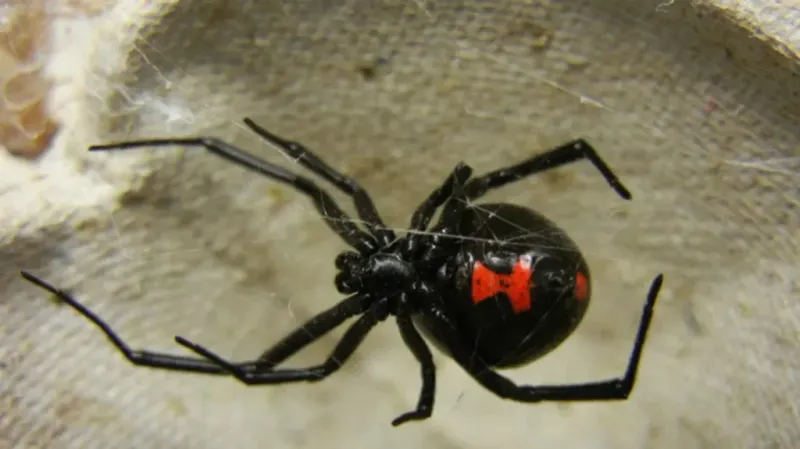
Glossy black with a telltale red hourglass on their abdomen, these infamous arachnids lurk in woodpiles, outbuildings, and garden debris across the South. Only females possess the dangerous venom – a neurotoxin more potent than a rattlesnake’s drop for drop.
Their webs lack the symmetrical beauty of garden spiders, appearing instead as messy, tangled silk strands. Bites cause intense pain that spreads from the site to the chest, abdomen, and entire body, sometimes accompanied by severe muscle cramping, nausea, and breathing difficulties.
8. Timber Rattlesnake

Forest guardians with attitude, timber rattlesnakes patrol the woodlands and mountain ridges throughout the southern Appalachians. Their color variations – from yellow to black with dark bands – help them vanish against the dappled forest floor.
Unlike their more aggressive cousins, timbers typically give fair warning before striking, vibrating their rattles with increasing intensity as threats approach. Their venom contains a cocktail of hemotoxins that destroy blood cells and tissues. Despite their dangerous reputation, they’re actually shy creatures that avoid human contact whenever possible.
9. Southern Black Widow

A regional variant of the classic black widow, the southern black widow features a complete hourglass marking rather than the broken pattern seen in other species. They love establishing webs in outdoor privies and sheds – earning them the nickname “outhouse spiders” across rural areas.
Females fiercely guard their distinctive round egg sacs, becoming more aggressive when protecting their young. Their venom affects the nervous system, causing immediate pain followed by abdominal cramping, sweating, and elevated blood pressure. Despite their fearsome reputation, fatalities are extremely rare with proper medical care.
10. Coral Snake
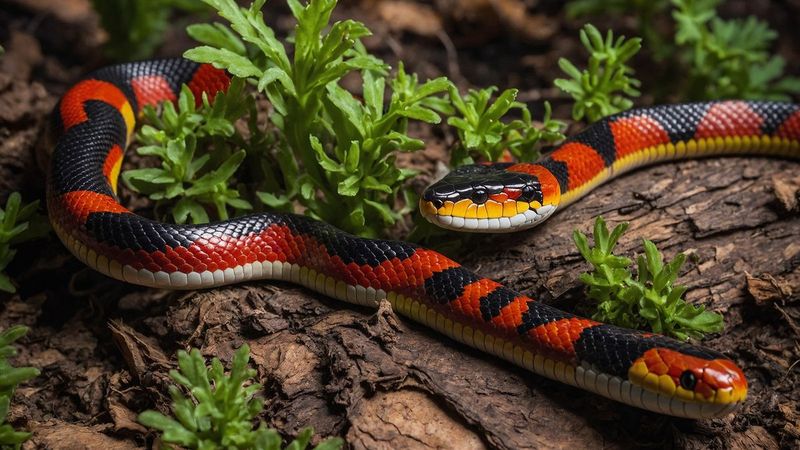
Brilliant bands of red, yellow, and black make the coral snake one of the South’s most beautiful – and deadliest – reptiles. Remember the rhyme: “Red touch yellow, kill a fellow” to distinguish them from harmless mimics like the scarlet kingsnake.
Unlike pit vipers, coral snakes have small, fixed fangs and must chew to deliver their potent neurotoxic venom. They’re shy creatures that spend most of their time burrowed underground or hidden in leaf litter. Their venom attacks the nervous system, potentially causing respiratory failure if left untreated.
11. Yellow Sac Spider
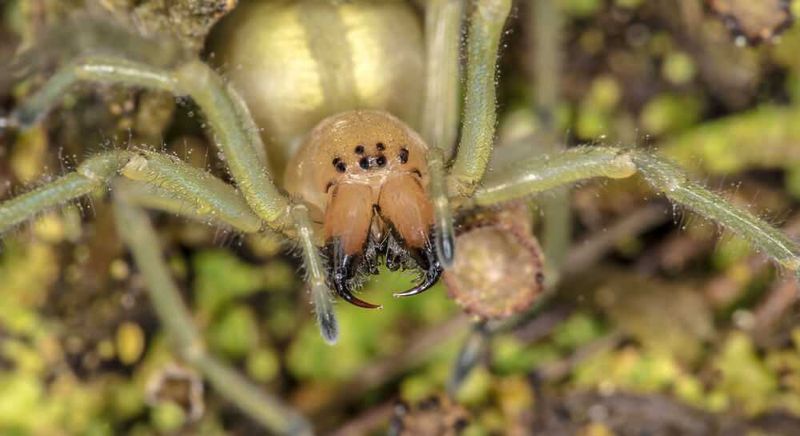
Pale yellow to beige nocturnal hunters, these small spiders frequently enter southern homes during cooler months. Rather than building permanent webs, they construct silken sacs for daytime hiding, often in ceiling corners or behind curtains.
Surprisingly aggressive for their size, they account for more bites than almost any other spider in the region. Their cytotoxic venom causes painful wounds similar to mild brown recluse bites – a burning sensation followed by redness and a slow-healing sore. Multiple bites can occur as they may hide in clothing and bedding.
12. Southern Black Racer
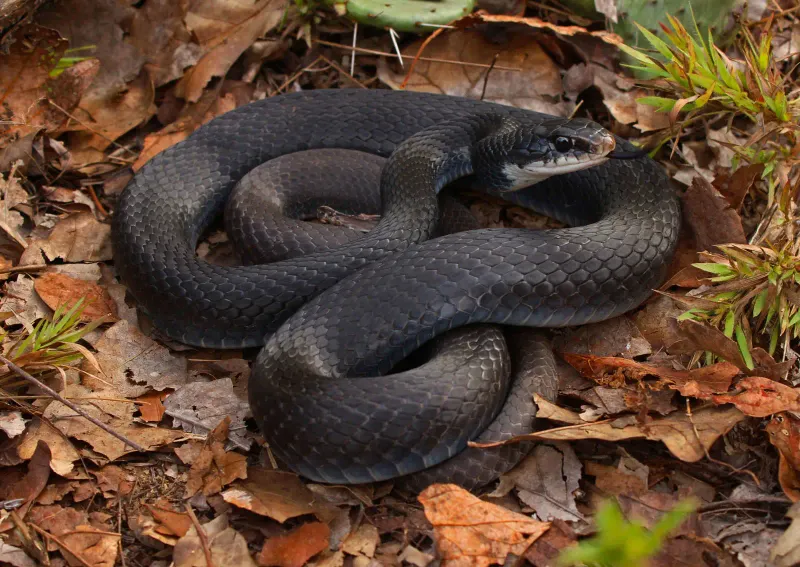
Sleek and lightning-fast, these jet-black snakes with white chin patches aren’t technically venomous but deserve mention for their intimidating defensive displays. When cornered, they’ll vibrate their tails against leaves, mimicking a rattlesnake’s warning.
Their aggressive posturing and willingness to strike repeatedly when threatened causes many southern residents to mistake them for dangerous species. Though their bites can be painful and may become infected, they pose no serious medical risk. These beneficial predators actually help control rodent and insect populations throughout their range.
13. Pygmy Rattlesnake

Don’t let their diminutive size fool you – these foot-long vipers pack a serious punch. Found throughout the southeastern coastal plains, pygmy rattlers are often overlooked due to their small stature and barely audible rattle.
Unlike their larger cousins who warn before striking, pygmies often remain motionless until the last moment. Their venom may be less potent than larger rattlesnakes, but their small size makes them harder to spot and more likely to be stepped on. They prefer pine flatwoods and the edges of wetlands across Florida, Georgia, and Alabama.
14. Arizona Bark Scorpion
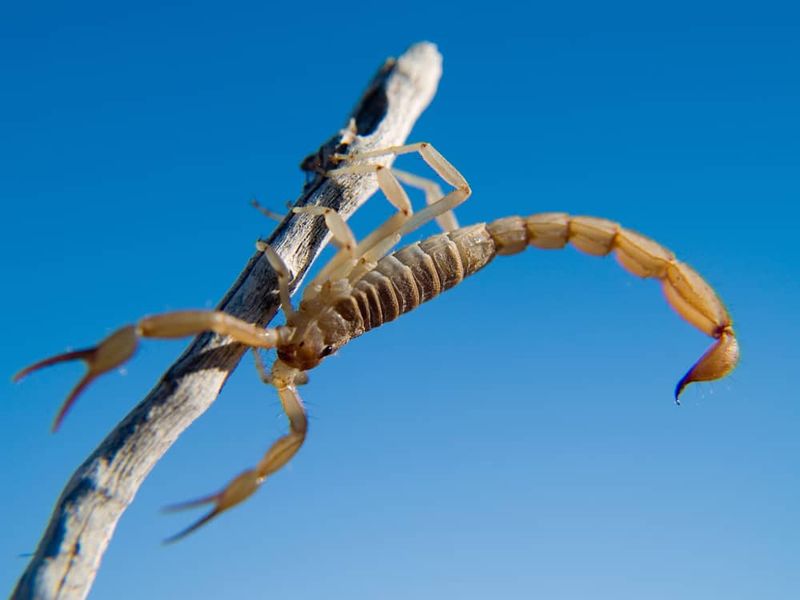
Stowaways from the Southwest, these dangerous scorpions have established populations in parts of Louisiana and Texas. Their light brown, paper-thin bodies allow them to squeeze through the tiniest cracks in homes and hide in shoes, bedding, or clothing.
Unlike most scorpions found in the South, their sting delivers a powerful neurotoxin that causes extreme pain, numbness, and tingling that may last for days. Particularly dangerous to children and the elderly, severe stings can cause difficulty breathing, muscle spasms, and convulsions requiring immediate medical attention.
15. Canebrake Rattlesnake

A regional variant of the timber rattlesnake, canebrakes patrol the lowland forests and cane thickets of the southeastern coastal plains. Their distinctive rust-colored dorsal stripe sets them apart from their mountain-dwelling cousins.
Surprisingly, they possess two different types of venom they can deploy depending on the situation. Early season bites often contain neurotoxic compounds, while later season encounters typically result in tissue-destroying hemotoxic venom. Large specimens can deliver massive venom loads, making them one of the most medically significant snakes in the South.
16. Florida Scorpion
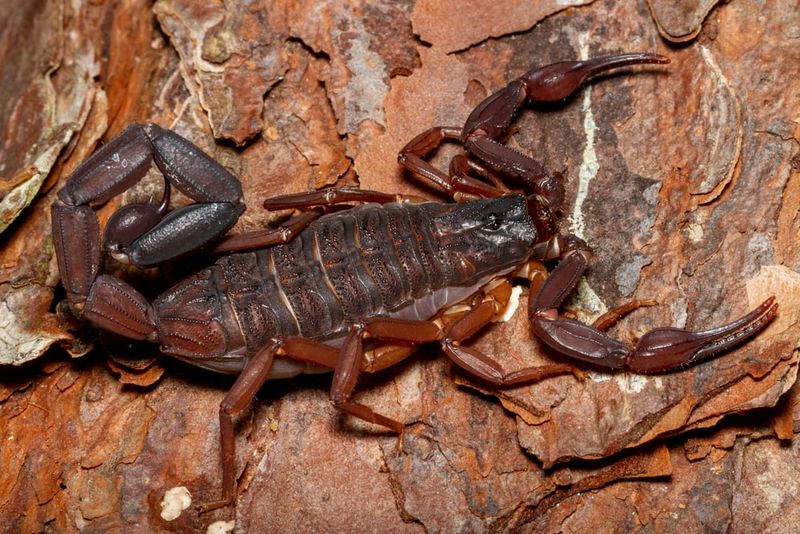
Scurrying through leaf litter and hiding under logs across the Gulf states, these small but intimidating arachnids deliver painful surprises to unwary gardeners. Their stingers inject a cocktail of compounds that cause immediate burning pain followed by localized swelling.
Though less dangerous than their western relatives, Florida scorpions still pack enough venom to create serious discomfort. They frequently enter homes during hot, dry weather in search of moisture and prey. Multiple species inhabit the region, ranging from the common Hentz striped scorpion to the larger Guiana striped scorpion found in southern Florida.




